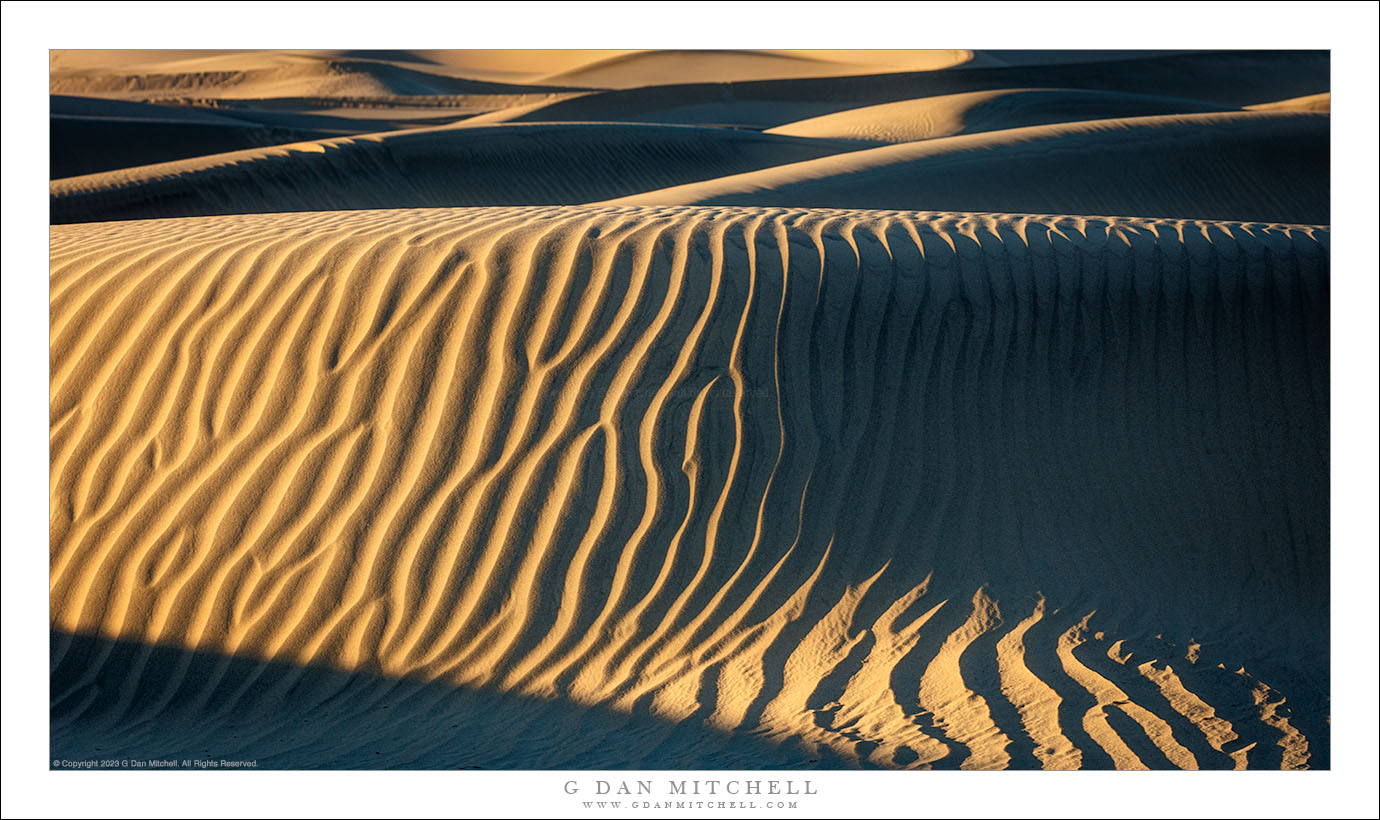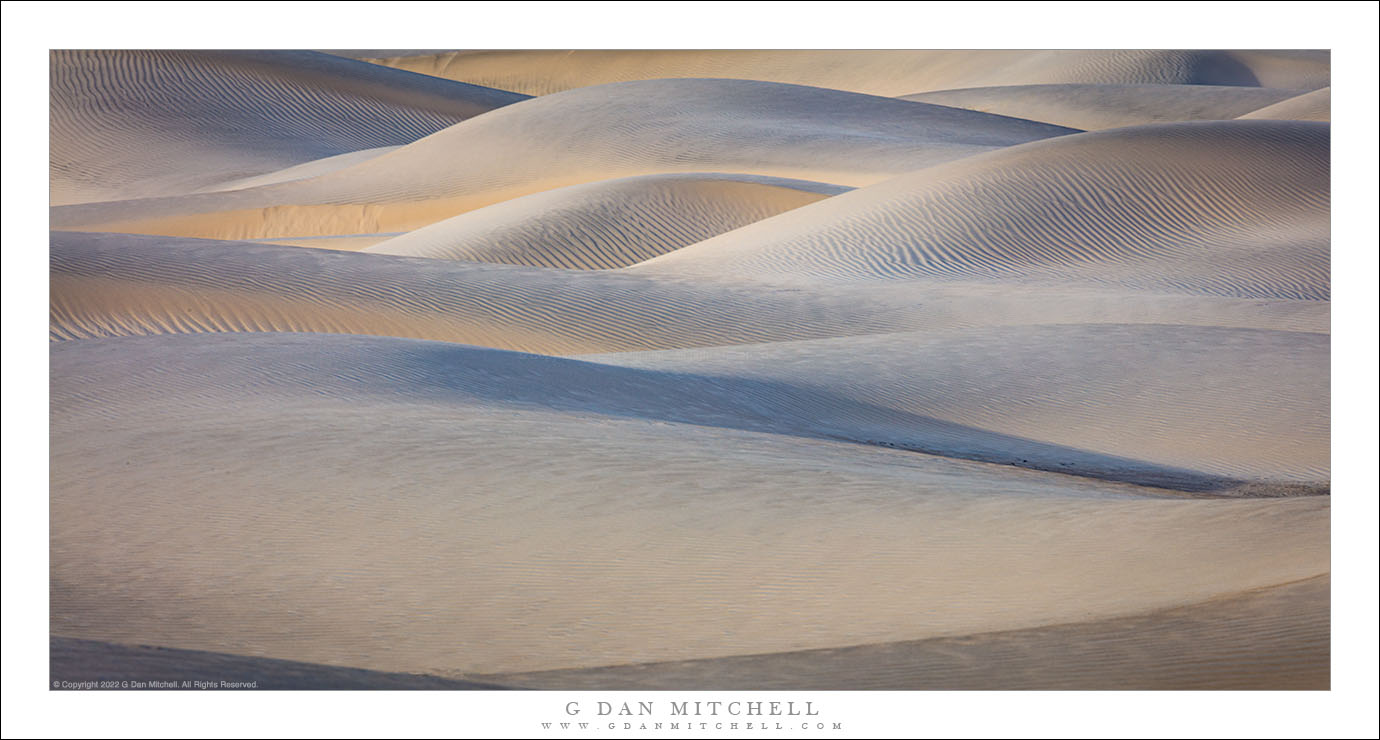
Dune Patterns, Evening. © Copyright 2023 G Dan Mitchell.
Evening side-light highlights the textures of san dunes, Death Valley National Park.
What photographic visit to Death Valley would be complete without at least one photograph of sand dunes? I did not devote much time to that subject on this visit, but I did spend an evening among the dunes, arriving before sunset and continuing to photograph into the early dusk, when I could work with softer light.
In this location the direct light ends a bit before the actual sunset time, since a range of tall mountains stands to the west, casting long shadows across the dunes. After photographing there for years, I’m still surprised when these shadows arrive and suddenly the light is gone. I made this photograph during the brief window of golden hour light just before that happened.
G Dan Mitchell is a California photographer and visual opportunist. His book, “California’s Fall Color: A Photographer’s Guide to Autumn in the Sierra” is available from Heyday Books, Amazon, and directly from G Dan Mitchell.
Blog | About | Twitter | Flickr | Facebook | Email
Links to Articles, Sales and Licensing, my Sierra Nevada Fall Color book, Contact Information.
Scroll down to leave a comment or question. (Click this post’s title first if you are viewing on the home page.)
All media © Copyright G Dan Mitchell and others as indicated. Any use requires advance permission from G Dan Mitchell.



